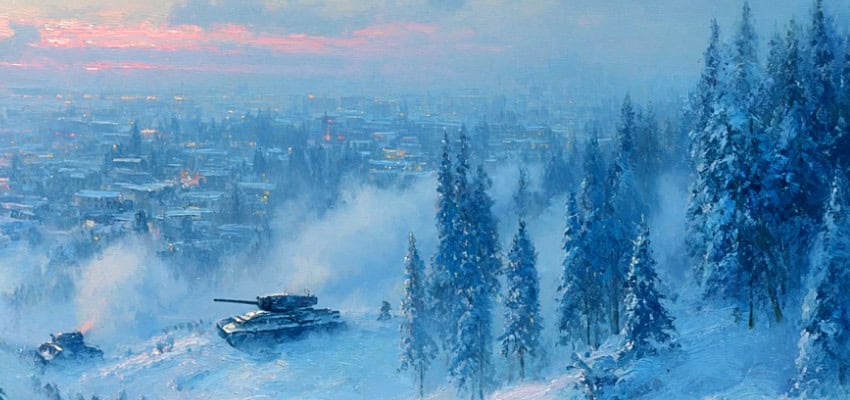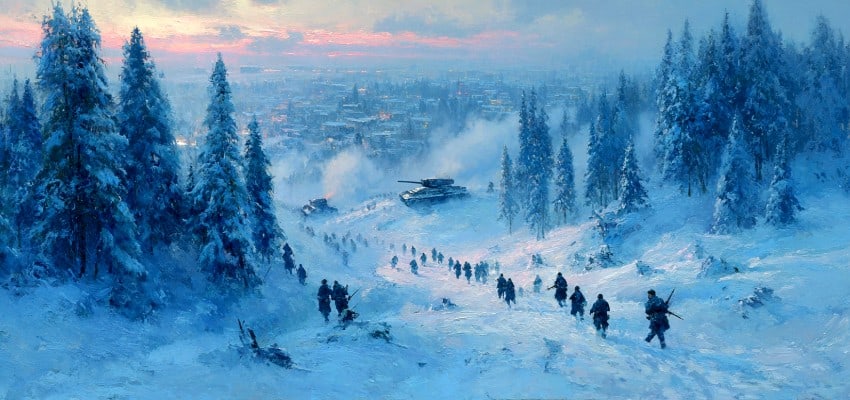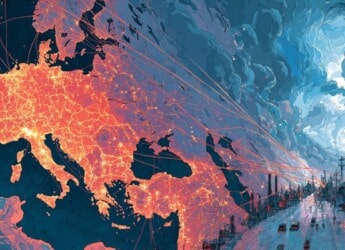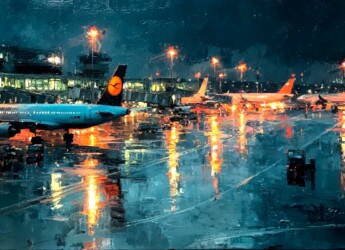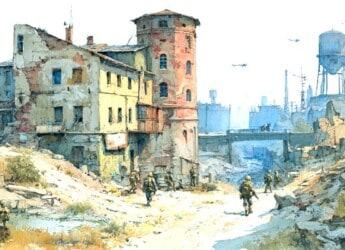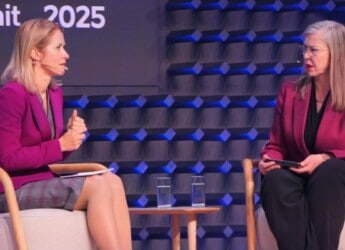Editor’s Note: Powerful nations often underestimate the cost of conquest—and the resolve of those who resist. This article draws compelling parallels between Finland’s Winter War of 1939 and Ukraine’s ongoing defense against Russian aggression. Though decades apart and shaped by different technologies, both conflicts underscore a sobering truth: for smaller nations, defending sovereignty can demand unbearable sacrifices. At times, preserving independence may require conceding territory—not out of weakness, but as the steep price of survival. This comparison challenges us to consider what sovereignty truly demands—and what it sometimes must surrender to endure.
Content Assessment: From Karelia to Kyiv: Sovereignty Tested from Finland’s Winter War to Ukraine’s Modern Struggle
Information - 94%
Insight - 92%
Relevance - 91%
Objectivity - 93%
Authority - 91%
92%
Excellent
A short percentage-based assessment of the qualitative benefit expressed as a percentage of positive reception of the recent article from ComplexDiscovery OÜ titled, "From Karelia to Kyiv: Sovereignty Tested from Finland’s Winter War to Ukraine’s Modern Struggle."
Industry News – Geopolitical Beat
From Karelia to Kyiv: Sovereignty Tested from Finland’s Winter War to Ukraine’s Modern Struggle
ComplexDiscovery Staff
Winter comes early in the north, and with it, the shrouding gray of uncertainty. In November 1939, columns of Soviet troops and armor crossed the Finnish border, their ambitions as boundless as the forests that stretched before them. Over eighty years later, the haze of war again blankets Europe’s east—this time, not in Finland’s frozen forests, but across Ukraine’s steppe and cities. While history offers instructive parallels, it also reveals how profoundly the struggle for sovereignty can shift across time and terrain, making each conflict distinct even when surface similarities tempt easy comparisons.
The Winter War: Isolation and Ingenuity
The story of the Winter War begins with fear and calculation. Freshly independent since 1917, Finland stood guard over its sovereignty, wary of the Soviet Union’s growing apprehension over Nazi Germany’s ascent. Moscow demanded border concessions; Helsinki refused. In response, the Soviets launched an invasion on November 30, 1939. What followed was not the rapid conquest many anticipated, but a 105-day ordeal marked by Finnish cunning and resolve.
Utilizing intimate knowledge of terrain and climate, Finnish soldiers harried the Soviets, leveraging forests for cover, winter’s depth for camouflage, and mobility for survival. The famous “motti” tactics—encircling and destroying isolated Soviet units—became symbols of how smaller forces could exploit local advantages against conventional superiority. Yet, despite fierce resistance and tactical brilliance, Finland’s vast disadvantage in manpower and materiel ultimately told its own story. By March 1940, the Moscow Peace Treaty ended the fighting. Finland lost about one-tenth of its territory—including key industrial lands and the city of Viipuri—but preserved what mattered most: its sovereignty and national identity, earning a wary respect from its adversary.
Crucially, Finland fought largely alone. Sympathy reverberated across Europe and the Atlantic, volunteers materialized, and Western governments voiced support. The League of Nations expelled the Soviet Union, but the larger reality of looming global war and limited communication networks meant that international coordination remained minimal. In the final calculus, Finland’s stand was solitary; the aid it received, while encouraging, was insufficient to alter the strategic outcome. The nation endured loss, but not subjugation—a sovereignty diminished territorially but preserved politically.
Ukraine: Connected Resistance in a Digital Age
Fast forward to February 2022. In the wake of Russia’s annexation of Crimea in 2014 and years of conflict in Donbas, Russian forces moved with designs of swift victory, only to find themselves facing a fundamentally different kind of resistance. This time, the defending nation would not fight alone, and the very nature of modern warfare had been transformed.
Unlike Finland’s isolated resistance, Ukraine sits firmly at the nexus of global attention and support networks. Assistance from the United States, NATO allies, and the European Union has been sustained and transformative, amounting to tens of billions of dollars in military aid, humanitarian support, and unprecedented intelligence sharing. Real-time satellite imagery, global surveillance networks, and secure communication systems have enabled coordination that was unimaginable in 1940. Social media has turned every Ukrainian civilian into a potential correspondent, broadcasting resistance and atrocities to a global audience in ways that create immediate political pressure for continued support.
Yet even here, the parallel reveals its limits as much as its insights. While both conflicts feature smaller nations employing asymmetric tactics—Finland’s ski troops and Ukraine’s drone warfare both exemplify creative adaptation—the technological landscape creates entirely different possibilities. Ukrainian forces deploy precision-guided missile systems, sophisticated electronic warfare capabilities, and coordinate through encrypted digital networks that allow real-time battlefield adaptation. The “motti” tactics of 1940 find their echo in Ukraine’s ability to strike deep behind Russian lines using Western-supplied long-range weapons, but the scale and precision represent a qualitative leap.
Testing the Parallels: Where History Rhymes and Where It Breaks
The comparison illuminates enduring patterns while revealing crucial differences. Both conflicts began with overconfident invasions by a larger power expecting quick victory. Both smaller nations leveraged superior knowledge of terrain and higher motivation to slow and frustrate their attackers. In each case, initial international sympathy translated into material support, though the mechanisms and scale differ dramatically.
However, the differences prove equally instructive. Finland’s 105-day war concluded with territorial concessions but preserved independence; Ukraine’s conflict stretches across years with no clear endpoint. The Winter War occurred in a world of limited media penetration and slower international coordination; Ukraine’s struggle unfolds in real-time across global networks that make sustained indifference nearly impossible for democratic nations.
Perhaps most significantly, the strategic objectives differ fundamentally. Stalin sought specific territorial and security concessions from Finland while generally accepting its continued existence as a buffer state. Russia’s aims in Ukraine appear more maximalist—not merely territorial adjustment but regime change and the elimination of Ukraine as an independent geopolitical actor. The very existence of Ukrainian sovereignty is the target.
The Human Cost and Territorial Reality
Both conflicts carry tremendous costs. By August 2025, Russia controls approximately one-fifth of Ukrainian territory. Vast swathes of the Donetsk and Luhansk regions, much of Zaporizhzhia and Kherson, and the Crimean Peninsula remain under occupation. The front has solidified into a grinding struggle, inflicting enormous hardship on combatants and civilians alike. Just as Finland emerged from its war with territorial losses but its independence intact, Ukraine today faces the deep wounds of displacement, massive casualties, and constant threats to its sovereignty. Yet it also stands more integrated with Europe than ever, having held the line for its sovereignty even as territorial losses mount.
For both Finland and Ukraine, the question was never just about land—it was about self-determination. Sometimes, sovereignty is preserved not by retaining every border, but by defending the core of national identity and statehood.
Geopolitical Consequences: Local Wars, Global Implications
What makes the Ukrainian episode historically distinct is not just its duration or international support, but the scope of its geopolitical consequences. The battle for Ukrainian sovereignty has reordered European security architecture, energized NATO with new purpose and members, and redefined energy policies across the continent. Economic warfare through sanctions—a tool largely unavailable in 1940—has become a central feature of the conflict, creating global economic ripple effects that the more isolated Winter War could never have generated.
Finland’s resistance, while inspiring, remained largely peripheral to the broader trajectory of World War II. Ukraine’s struggle, by contrast, has become central to questions about the post-Cold War international order, the viability of nuclear deterrence, and the future relationship between democratic alliances and authoritarian challengers.
Russia’s reputation, once that of an unpredictable but formidable power, now suffers from exposure of systemic military weaknesses and diplomatic isolation unprecedented since the Soviet era. This reputational damage occurs in an interconnected world where soft power and economic relationships matter in ways that were less relevant in 1940.
Enduring Questions, Evolving Answers
Despite these profound contextual differences, both conflicts illuminate enduring questions about sovereignty, resistance, and the dynamics of asymmetric warfare. How does a smaller nation not merely withstand but sometimes reshape the ambitions of a giant? What is the cost of sovereignty, and how much is resilience truly worth? In both cases, the answers emerge not just from military tactics or international law, but from the complex interplay of national will, international support, and the particular constraints of their historical moments.
The Winter War demonstrated that even unsuccessful resistance could preserve core national values and identity while earning international respect. Ukraine’s ongoing struggle suggests that in our interconnected age, sustained resistance can potentially reshape broader international systems and alliances in ways that extend far beyond the original conflict’s boundaries.
As in the forests of Karelia in 1940, so too now in the contested territories of eastern Ukraine: history’s footprints are deep, but never so deep that new ones cannot be made. The contexts differ profoundly—the isolation versus connection, the limited versus global implications, the brief winter campaign versus the prolonged struggle. Yet both conflicts remind us that sovereignty—while often costly to defend—can prove resilient when anchored by national will, strategic adaptation, and the support of a world that still values self-determination.
News Sources
- How Finns used the ‘motti’ tactic to entrap Soviets in Winter War (The Nomad Today)
- How much territory does Russia control in Ukraine? (Reuters)
- Soviet Union expelled from League of Nations (Zachor Foundation)
- Russian Offensive Campaign Assessment, August 16, 2025 (Institute for the Study of War)
- Chersicla, R. (n.d.). What free men can do: The Winter War, the use of delay, and lessons for the 21st century. Infantry Magazine.
Assisted by GAI and LLM Technologies
Additional Reading
- How Ukraine Built a National Cyber Defense to Withstand Russian Aggression
- Engineering Cyber Resilience: Lessons from the Tallinn Mechanism
- University of Exeter and CCDCOE Publish Cyber Law Handbook Guiding Nation States in Peace and Conflict
- The LockBit Breach: Unmasking the Underworld of Ransomware Operations
Source: ComplexDiscovery OÜ
